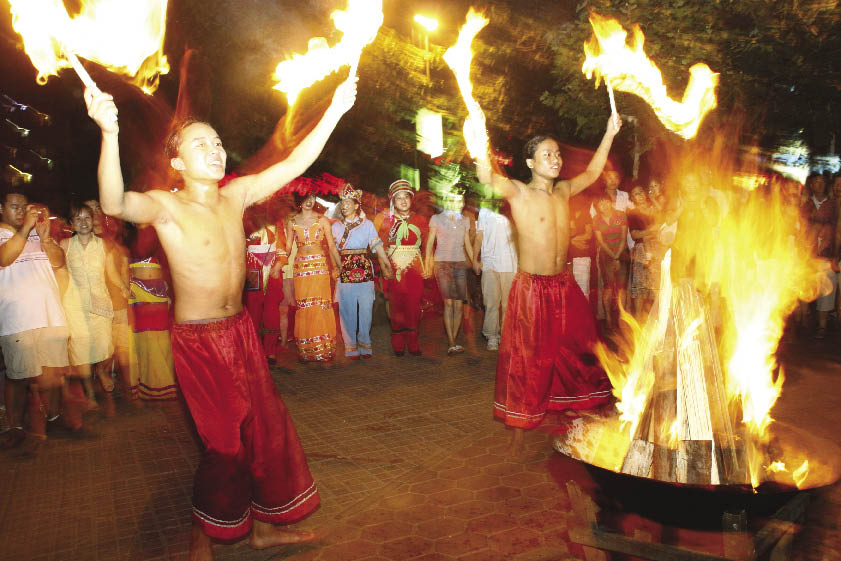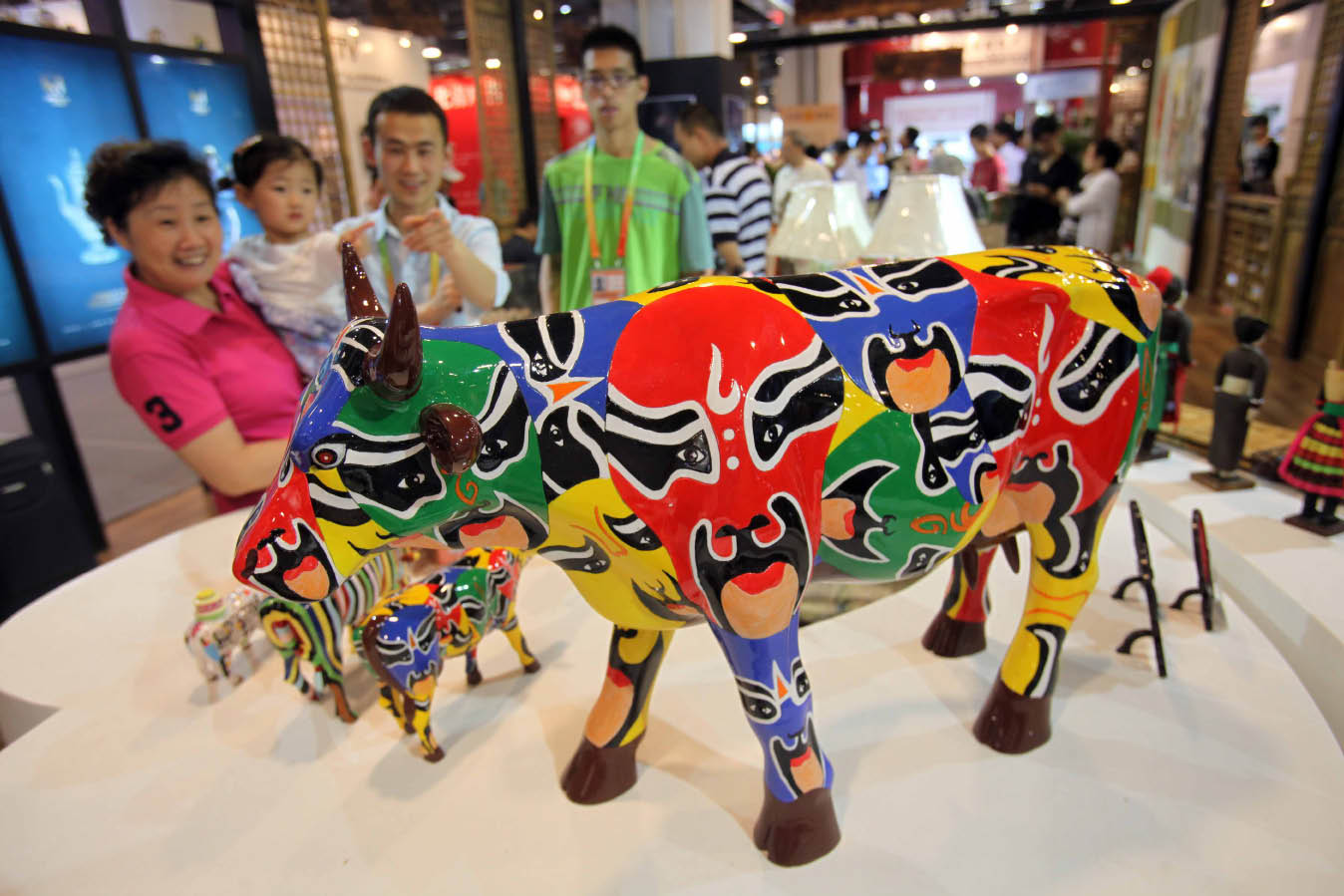Festival to Exalt Fire
By staff reporter XING WEN
THE Torch Festival, also known as an Oriental Carnival, is an age-old custom among ethnic minorities such as the Yi, Bai, Achang and Lahu that live in southwest China. The celebration is held at different times by different ethnic groups, but generally takes place on the 24th day of the sixth lunar month and lasts for three consecutive days.
Fire Worship
The most popular legend about the origins of the festival tells of a demon, jealous of the happy and peaceful life of Chinese ancestors, who sent an evil confederate to torment them. United and undaunted they bravely fought and defeated this devil. Incensed at his defeat, the demon sent a plague of pests to destroy their crops. The people's response to this attack was to light torches made from pine branches and dry bamboo. The flames killed the invading pests and frightened the demon off.
This legend has been told for generations, and the Torch Festival came about as a way of commemorating these valiant ancestors. Different ethnic minorities each tell a slightly different version of it, but all reflect the origins of fire worship.
Fire truly seemed like a gift from heaven millennia ago. It enabled early peoples to cook meat, keep warm, find their way through darkness and protect themselves from wild beasts. As they regarded fire as a supernatural force capable of driving away evil and protecting life, the torch symbolizes power and protection.
Joyous Gala
 |
|
An exultant crowd sings and dances the whole night through. |
Wives and mothers begin making their family members celebratory garments and preparing toothsome dishes for guests a couple of weeks before the Torch Festival begins. Adult men, meanwhile, get in training for the wrestling contests and horse races that are a main feature of the festival.
Each village makes a 20-meter-tall torch out of pine and cypress tree trunks bound with layers of kindling and pine branches, and attach bunting and flowers to the top. Every family also places a smaller torch in front of their house.
On the big day, everyone dresses in their most ceremonial attire and assembles in the village square where the main torch stands. They then perform ritual sacrifices to their ancestors and to the land god of pigs and cows.
This is the day on which the Bai and Yi people usually enact the "planting the sun" ritual. It consists of placing dry, flammable stubs in front of the huge torch that symbolizes the sun. At sunrise, villagers gather as the local shaman starts a fire in the same way as did early ancestors, by rubbing two sticks of dry wood together. Once the sparks start to fly, villagers come forward with dry branches and hay to feed the fire and each light their own torch. They then ignite the fireplaces outside their houses, thus symbolically planting a sun and making sunshine accessible to every household. Young mothers with infants on their backs circumambulate the main torch three times as a prayer for the health of their children.
People of the Lisu ethnic minority hold a grand torch parade after the sacrificial ceremony. All villagers – men and women, young and old – join in the procession, each carrying a torch, which gives it the look of a fiery dragon. They then walk around houses, up and down hillsides and over farmlands using their flaming torches to burn cobwebs in hopes of killing insect pests and invoking a bountiful harvest. When processions from different directions meet, they exchange their tallest torches in the belief that it will expel evil and preserve the security of the community. People of the Achang ethnic minority also hold to this custom.

